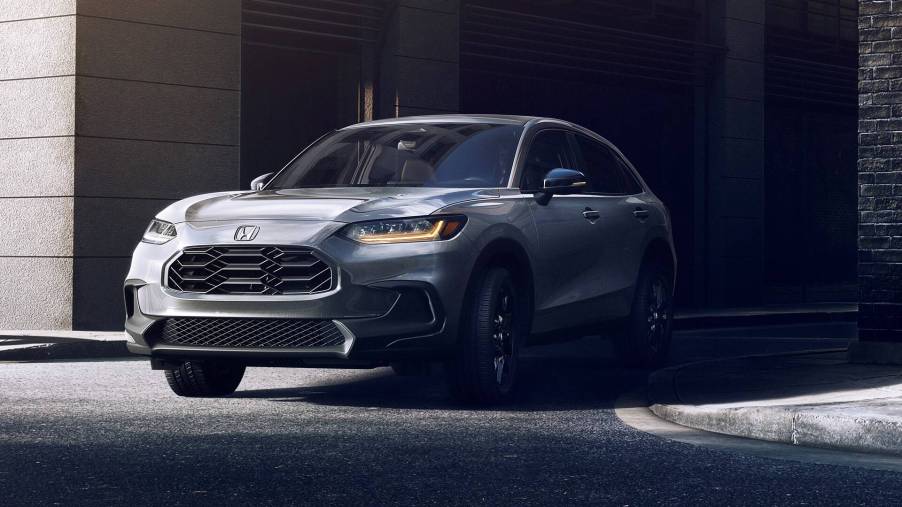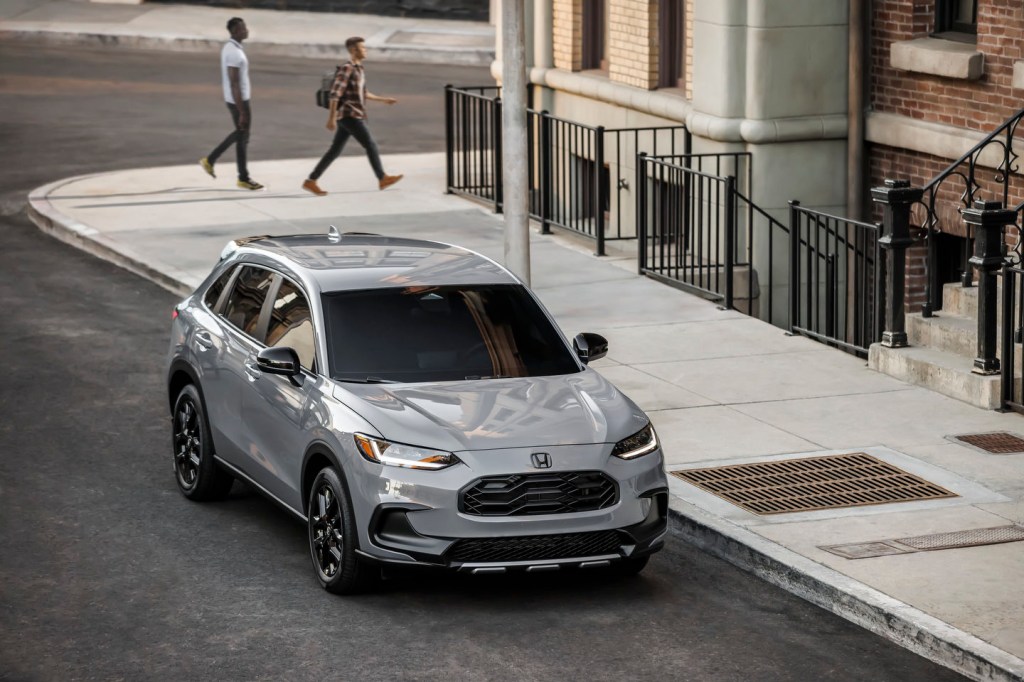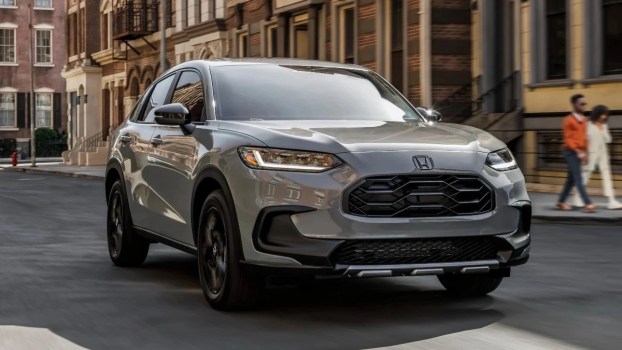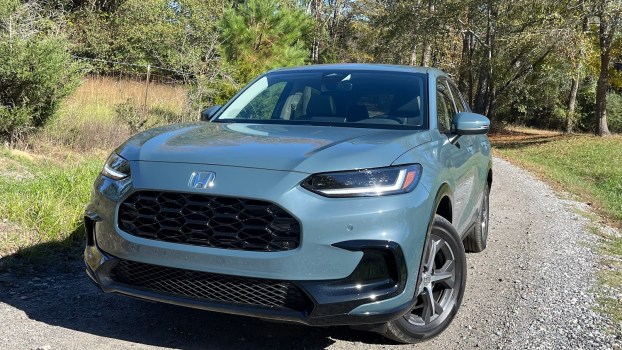
3 Issues Hold the 2024 Honda HR-V Back From Greatness
In an increasingly popular tiny SUV segment, the Honda HR-V is fighting to find its place and shine. While the 2024 Honda HR-V is a sensible option to consider, it has three areas that could be improved.
Three Honda CR-V features to consider

First of all, this isn’t a 2024 Honda HR-V bashing session. This little SUV has plenty to offer, including an attractive interior, it’s extremely safe, and it’s backed by Honda’s reputation for reliability.
However, the HR-V doesn’t have it all. There are a few more well-rounded options to battle such as the Mazda CX-30, Toyota Corolla Cross, Hyundai Kona, Subaru Crosstrek, and Nissan Kicks.
1. The 2024 HR-V is sluggish
The 2024 Honda HR-V could be more engaging. The standard 2.0-liter four-cylinder engine provides 158 and 138 lb-ft of torque. That’s a nice start, but it’s the sole engine option, so you can’t upgrade for more power.
With this engine, the HR-V can accelerate from 0 to 60 mph in about 10.9 seconds. This is slow for the segment.
The Mazda CX-30 can reach 60 mph in 8.1 seconds, the Crosstrek gets there in 8.4 seconds, and the Kona gets to 60 mph in about 7.2 seconds.
2. The HR-V could be more comfortable
While the HR-V has an abundance of passenger space and an upscale interior, it’s not the most comfortable option available. The front seats are stiff and unsupportive, but the rear seats are a little better.
The ride quality is pretty solid, but rougher impacts are noticeable. The cabin is pretty noisy at highway speeds as the loud engine whines. Road and wind noise could be fought with better insulation.
Also, there are no rear vents for passengers in the back. But the cabin is easy to keep warm or cool as needed.
3. The Honda HR-V is limited
The 2024 Honda HR-V offers AWD, but that’s about it for off-roading. It only has a ground clearance of 7.0 inches, so be wary of deeper snow and mud. Rivals offer off-roading modes, suspension lifts, tow hooks, all-terrain tires, and protective cladding.
There’s no option for raised roof rails to store cargo or gear. Plus, the HR-V isn’t recommended for towing. So, there are no extra cargo solutions.
The HR-V has 24.4 cubic feet of cargo space behind the rear seat and up to 55.0 cubes in total. That’s pretty good, but the VW Taos and Kia Seltos have more space.





